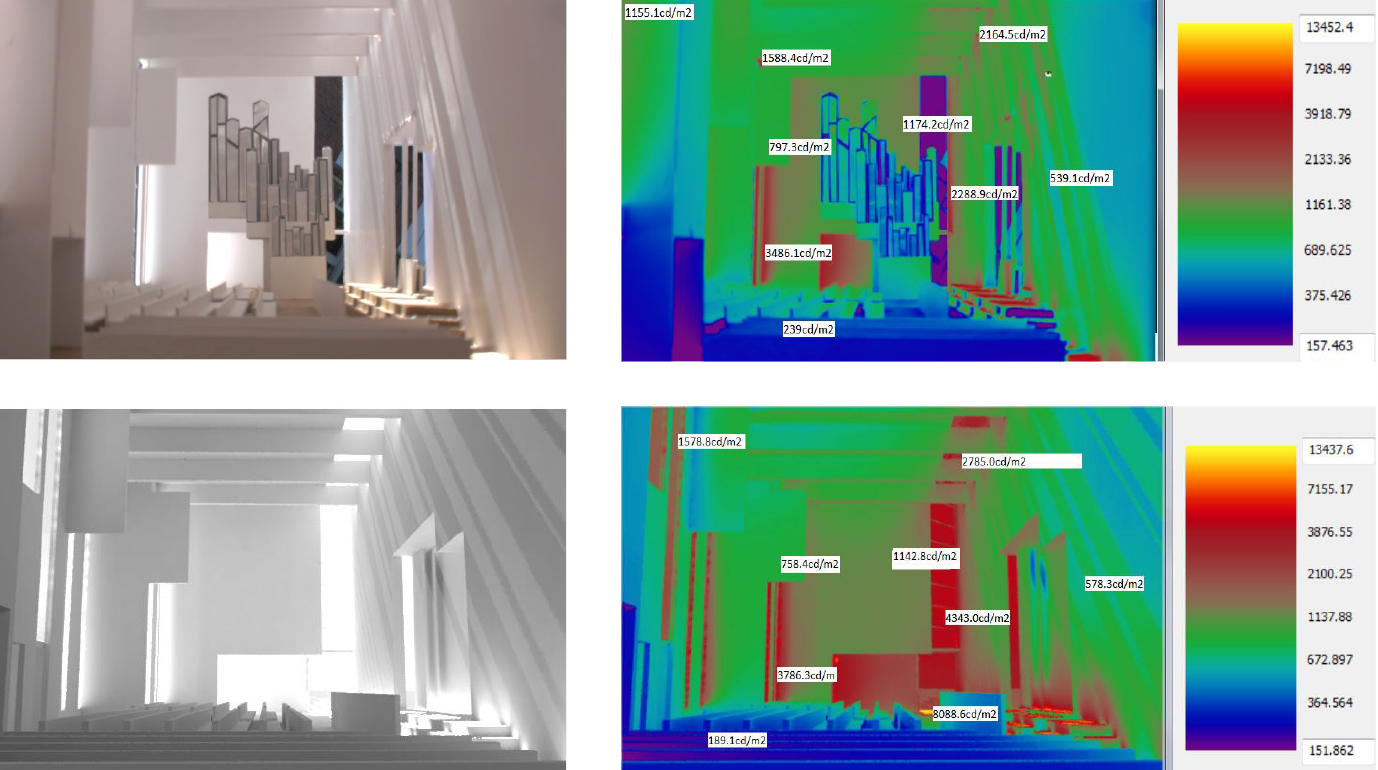Simulation versus scale model evaluations
Introduction to daylight simulations
In this assignment, we will use computer models to study daylight in spaces. We will use the results of the last assignment to validate the simulation tools and built trust in them. Further we will explore daylighting metrics that are only feasible to compute with the help of computer models. This assignment requires proficiency in Rhino and Diva for Grasshopper. For this assignment you will be submitting a zipped folder containing all material described below. Use this assignment to also extend and/or revise your final project. Due date: Tuesday, October 13 at 18:00 pm Points: 5 of 100 (teamwork)
Rhino model
Together with your team, set up a Rhino 3d model of the space you chose for the physical model analysis. When you model the geometry in Rhino you should model the material thicknesses and an adequate level of detail (resembling the scale models). The only exception are objects of transparent/translucent materiality (E.g. window panels should not be modeled as 0-thickness surfaces). When you model the geometry, use the layer system in Rhino to organize your geometry by surface material. This will make selection and material assignment much easier. Once you have the Rhino model ready proceed with the following steps.
Building trust in the simulation tools
For the physical model you had to choose one important perspective for your analysis. Replicate this perspective (choose one time when you had a clear sky) as closely as possible with the simulation tool. The output of the DIVA Radiance simulation is also an HDR image (files with the .pic ending are identical to the .hdr files). You can use the same analysis workflows (wxfalsecolor or HDRscope) to analyze the images.
- Render an image of your perspective with the Clear Sky Model at one time-step of your choosing. Test all 3 image quality presets DIVA provides.
- Compare those images quantitatively and qualitatively to your scale model HDR shot.
- Add a slide to your final project presentation
- Add the HDR images (rendered and taken with the camera) to the submission package.
